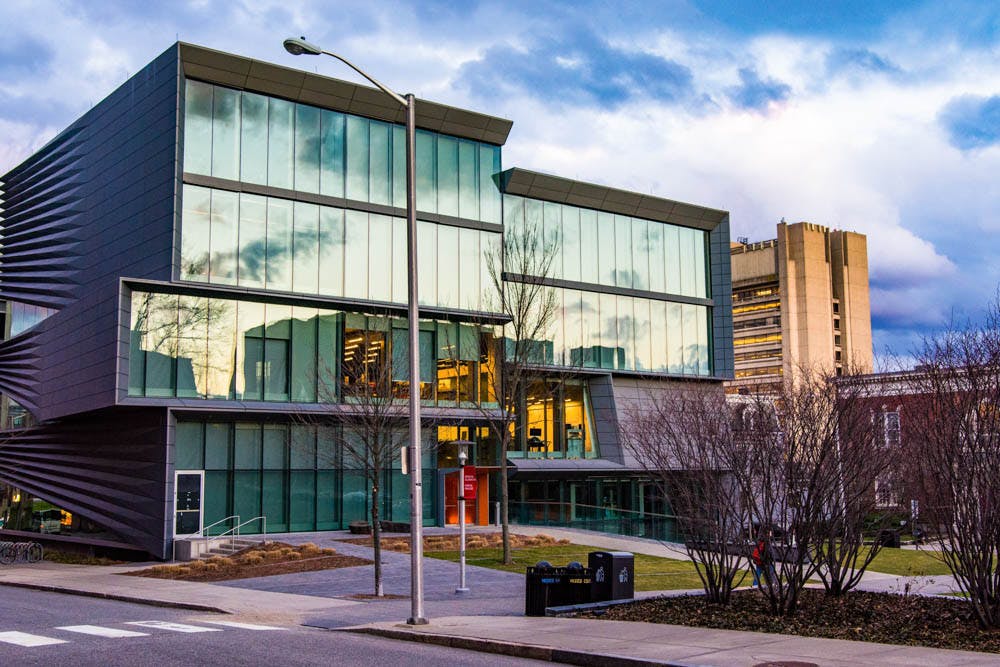The only thing eerier than Providence’s chilly weather is finding a sculpture that appears to mimic its stormy mood. That’s exactly what patrons of the Granoff Center for the Creative Arts found in David Bowen’s scupture exhibition, “Observers and Creators,” last Thursday.
Bowen’s installations generally explored the interactions between nature and technology. The three sculptures showcased tensions between artistic agency and art’s ability to exist independent of its creator. The exhibit was installed in late August and will continue to occupy the Cohen Gallery until Sept. 22.
In Bowen’s newest piece, titled “5twigs,” he found five sticks and 3-D printed an exact replica of each of them. The pale, plastic copies are fixed above their natural wooden equivalent, creating perfectly symmetrical halves. Mounted on a dimly lit white wall, the nondescript installation does not immediately catch the viewer’s eyes. The piece seems to play on how closely the visitor pays attention to the clandestine details of the exhibition. The artificial aspects “play a trick on (viewers’) eyes,” said John Dall’Aglio ’19. “I thought they were shadows at first.”
Many of the attendees at Thursday’s reception were interested not only in the installations’ messages, but also in their material function and the artistic process behind their creation. “Tele-Present Wind” proved to be confusing to visitors such as Deepak Khirwar ’19, who ultimately found the technological and modern themes compelling, he said. In the work, 42 dried plant stalks are attached to mechanisms on the floor that imitate the movement of plants in the wind. The piece had visitors guessing why the stalks were moving, with some positing that the movement of the visitors elicited the wind-like effects through motion sensors. “It makes me wonder what’s happening. And then I wonder why I’m intrigued by something so dead,” Dall’Algio said.
In actuality, as Bowen himself explained on the exhibition flyer, “the individual components of the installation are moving in unison as they mimic the direction and intensity of the wind from 1,300 miles away.” Sensors located at the University of Minnesota provide real-time data to direct the sculpture’s movement. But as a result of the sudden rain and wind on Thursday evening, it seemed to many as though the stalks were mimicking the weather directly outside of the gallery, lending an immediacy to the sculpture. A maze of wires on the floor blurred the lines between natural and artificial. “It looks like roots and vines. He could have set the wires in straight lines to be more efficient,” Khirwar said, pointing to the lengths that Bowen went to recreate nature through technology.
“Growth Rendering Device,” Bowen’s oldest sculpture on display, is a system in which a small plant relies on light and food provided by a device. The device also records the plant’s real-time growth through “rasterized inkjet drawings” produced every 24 hours on a long roll of paper, according to the flyer. Bowen explained that “Growth Rendering Device” has undergone this process many times before, and that the plant has grown to be quite large in previous incarnations of the sculpture. “Right now it’s more of a death rendering device,” Bowen said, gesturing to the small and inconsistent growth recorded on the paper. Looking at the piece, Dall’Aglio was interested in how nature is sustained by synthetic mechanisms in Bowen’s work. “The plant has become inauthentic and (is) sustained by inauthenticity,” he said.





